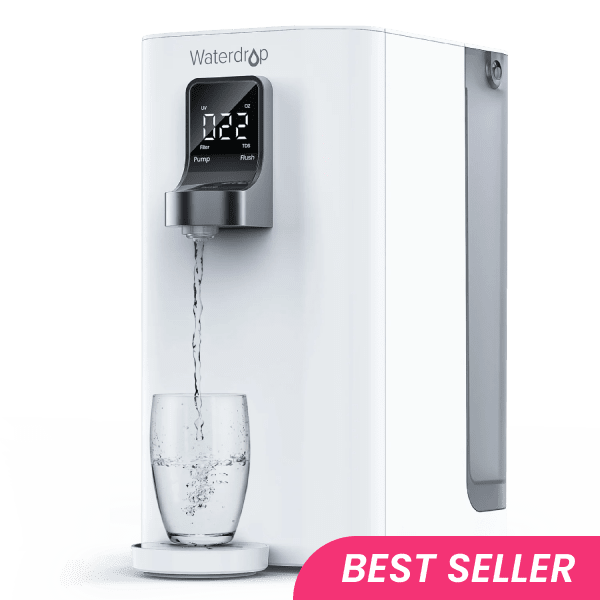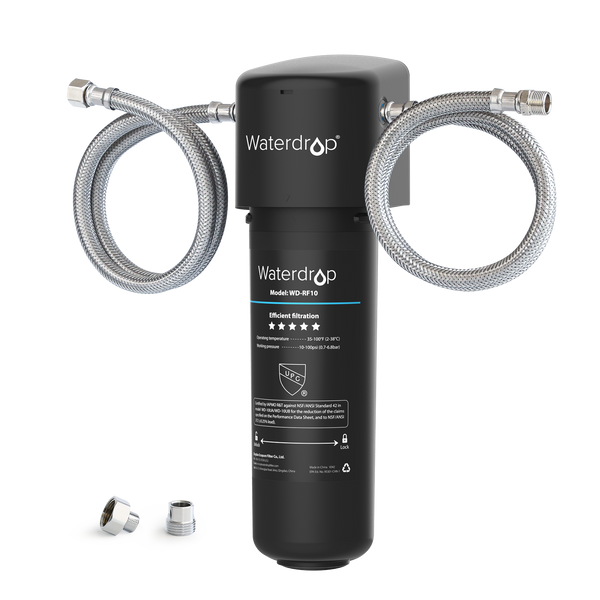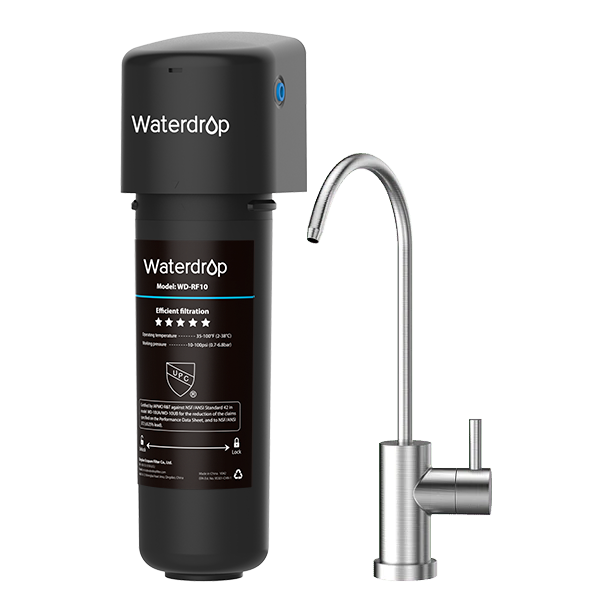Smart RO System
Space & Water Saving
No Tank, No Bacteria
Large Capacity, Fast Water Flow
Pure Water, Effortlessly. Upgrade to Tankless RO.
Shopping by:
Product Type
Countertop RO Systems (1)
Regular price
$199.00
Sale price
$199.00
Regular price
Unit price
/
Model Number WD-M5 Total Filtration Capacity 550 gallons Service Flow Rate 15-21 min/tank Product dimensions...
Want to learn more about countertop reverse osmosis water filter?
How does a reverse osmosis water filter work?
Reverse osmosis (RO) water filters purify
water by pressuring it through a semi-permeable membrane, reducing contaminants while allowing
clean water to pass. At first, the source water undergoes pre-filtration to remove sediments and
chlorine. Secondly, pressurization forces it through the reverse osmosis membrane, separating
clean water from contaminants. The purified water is collected in this way. The RO filter
removes salts, minerals, bacteria, and viruses, producing safe and healthy drinking water.
What contaminants does a reverse osmosis system remove?
Reverse osmosis (RO) can effectively remove various
contaminants including "forever chemicals" PFAS, dissolved salts
like sodium, chloride, and
fluoride, heavy metals, as well as harmful chemicals.
What's more, Waterdrop RO systems can
eliminate industrial
pollutants, providing you and your family with safe and clean drinking water. Common impurities
like sediment and foul odors are also filtered out by our RO water filters.
Do countertop RO systems produce wastewater?
Yes, countertop reverse osmosis systems do produce wastewater
just like the undersink RO filters.
During the reverse osmosis filtration process, only a
portion of the water passing through the membrane becomes purified water and suitable for
consumption. The rest water which contains the blocked contaminants, is discharged as
wastewater.
Is reverse osmosis water healthy?
RO systems can remove nearly 99% of particles and dissolved
contaminants from the source water. Some people hold the opinion that the reverse osmosis system
removes all the minerals from the tap water, which are beneficial for the human body. If you are
worried about that, investing in a remineralization water
filter can be a good choice. The
remineralization filter will re-add the essential minerals back to the filtered water.
What is the pure-to-drain ratio of the countertop reverse osmosis water filter?
It depends on different product models. If a countertop RO
system has a ratio of 1:3, it means that for every 1 gallon of filtered water, about 3 gallons
of wastewater is produced. Waterdrop adopts advanced technology to help you save your water
bills. The X Series RO systems have a pure-to-drain ratio of 3:1.
Why should you be concerned about forever chemicals PFAS?
In 2024, EPA imposed the first
national limits on forever
chemicals in drinking water. Detectable levels of PFAS have been identified in human tissues and
breast milk, indicating widespread exposure. High PFAS exposure is associated with adverse
health effects on the endocrine system, liver, thyroid, metabolism, development, and
immunotoxicity.
Exposure to PFAS primarily occurs through drinking water, food,
PFAS-containing consumer products, and dust. Notably, PFAS, especially longer-chain variants
like PFOA and PFOS, tend to bioaccumulate, binding to tissues and persisting for 2 to 9 years. A
countertop reverse osmosis filter or an undersink RO system can
filter out these chemicals from
your drinking water effectively.
Sort by
- Featured
- Best selling
- Alphabetically, A-Z
- Alphabetically, Z-A
- Price, low to high
- Price, high to low
- Date, old to new
- Date, new to old



















